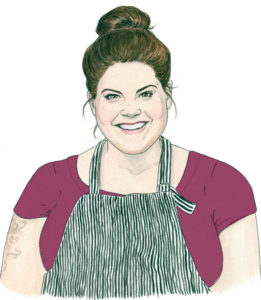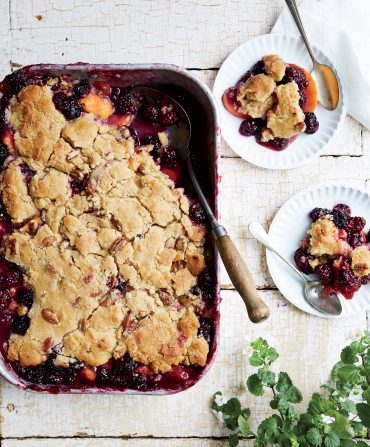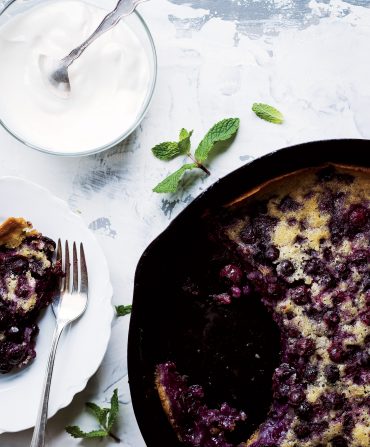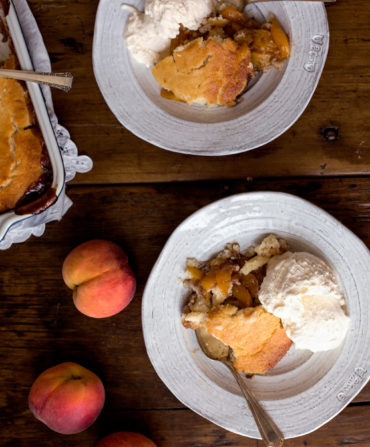“I feel like I’m a cultural ambassador,” says Maya Lovelace, a Beaufort, North Carolina–born chef who moved to Oregon six years ago after working with Sean Brock at Husk in Charleston, South Carolina. In Portland, she runs Mae, a pop-up that celebrates Southern Appalachian cooking, serving dishes that dress up classics like banana pudding with bourbon-barrel-smoked cacao nibs or rice grits with green-garlic butter. This summer, she’ll move Mae into a permanent location and open Yonder, a meat-and-three.
Lovelace takes the education of Northwesterners seriously, patiently explaining that Southern cuisine is a mix of cultures with a deep and sometimes messy history. “They get to learn that Southern food is a big, complex pot of stuff, and it’s not all Cracker Barrel and canned green beans.” Cobbler, however, seems to translate perfectly—especially in a place that embraces its local stone fruit and berries as much as Southerners do. Hers marries gorgeous nectarines and huckleberries (wild Western kin to blueberries).

Johnny Autry
“My dad’s cobbler was always the highlight of my summer,” Lovelace says. He learned to make it from his mother, Lillie Mae Abernethy Lovelace, who lived in Hickory, North Carolina. She was Lovelace’s most influential teacher. “I had the stereotypical on-a-stepstool how-to-make-biscuits education from her,” Lovelace says. “She was always in the kitchen wearing a muumuu and house shoes.”
The cobblers Lovelace grew up eating weren’t like most other families’, though. They were more like sonkers, desserts with a long history in Mount Airy, North Carolina. The dishes are siblings, but sonkers are deeper and wetter, with a thick layer of dough. The most striking difference is the dip, a sweet condensed-milk gravy served alongside. Lovelace had heard of sonkers growing up but only recently realized that what her grandmother called a cobbler would have been called a sonker if she had lived ninety miles north. The Lovelaces’ version has a layer of pastry sandwiched inside the fruit filling—it becomes like a sweet dumpling. Her grandmother called it “the goody.”
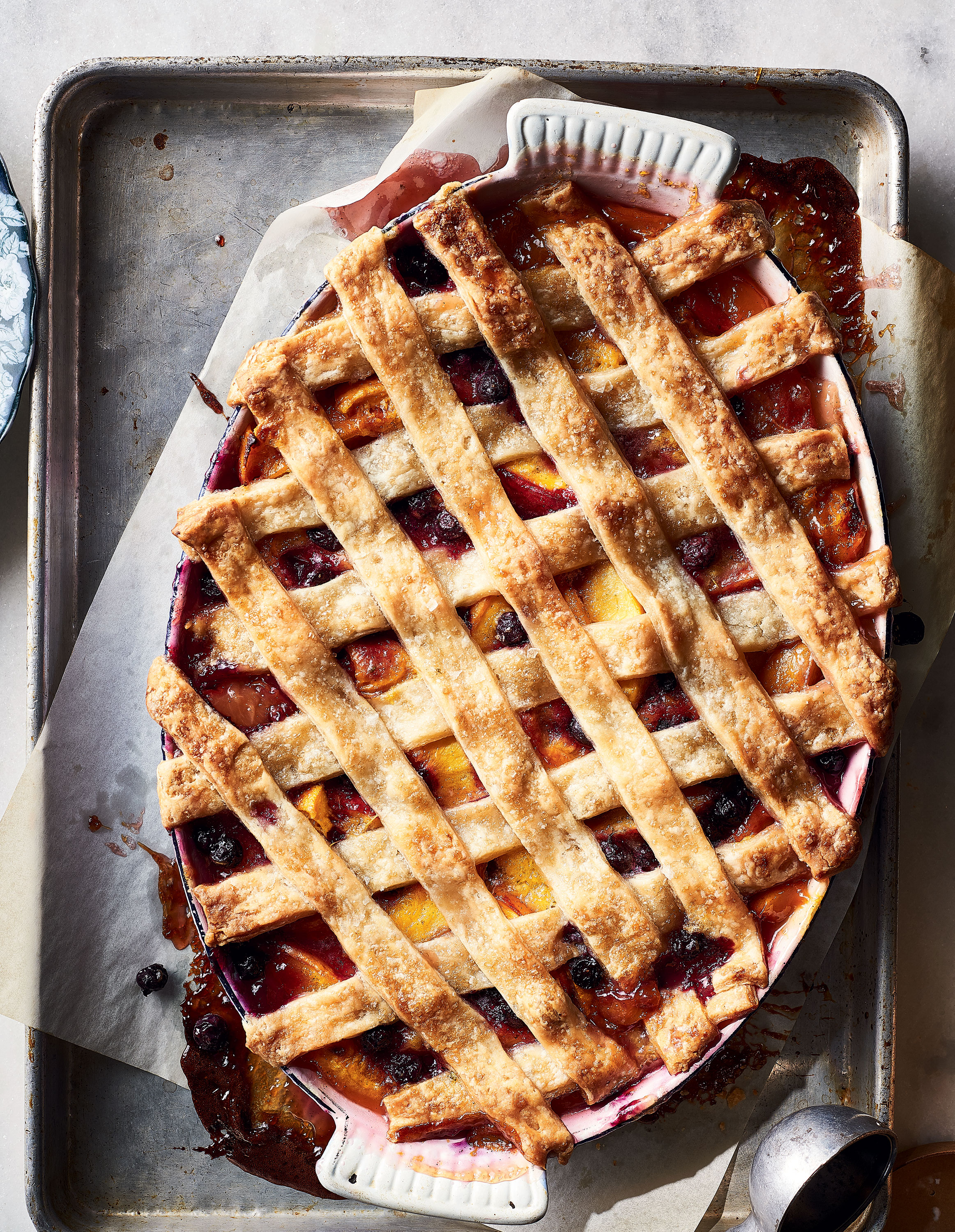
Johnny Autry
Like most chefs, Lovelace couldn’t help but up the ante. She fortifies the dough with finely ground white cornmeal and uses vodka to keep crust-toughening gluten at bay. She adds to the fruit ginger and cardamom, which marry with sugar she infuses with thyme.
Still, her approach to putting it all together is decidedly practical. For a baking dish, she advises cooks to “find your trustiest nine-by-thirteen Pyrex.” Use whatever fruit is freshest. And when the cobbler comes out of the oven, follow one rule. “Set a timer for thirty minutes and leave the kitchen,” Lovelace says. “The cobbler absolutely has to cool, or the whole thing will be a big juicy mess.” But it’ll stay warm enough to melt a scoop of vanilla ice cream into a rich, milky dip.



